How to Smoke a Brisket
Brisket is the holy grail of BBQ, and mastering it is a major accomplishment for any pitmaster. While there are numerous ways to smoke a brisket, there isn’t as much space for experimentation or mistakes when it comes to cooking it correctly. Because brisket is a tough, muscular piece of beef, cooking it slowly is the way to go. A smoked brisket cooked properly on a Traeger barbecue is soft, juicy, and tempting.
One of the eight basic (or primal) cuts of beef is the brisket. It is made up of two pectoral muscles that originate beneath the chuck and continue to the fifth rib till they meet. Brisket, like the chuck and shank, is made up of muscles that a steer employs often.
Two overlapping muscles are separated by a layer of seam fat in the whole beef brisket. The pectoralis profundus (also known as the flat) is a slimmer, more rectangular muscle, while the pectoralis superficialis (also known as the point) is a fatter, more bulbous muscle.
In This Article
Smoked brisket is a tricky beast. It’s similar to being in a long-term relationship. Do not take what you believe to be the rules for granted (because the rules change with each one you cook). Treat each time you smoke as if it were a fresh day and a new opportunity to master what you learned the previous time. So let’s get started.
Step-by-Step Guide
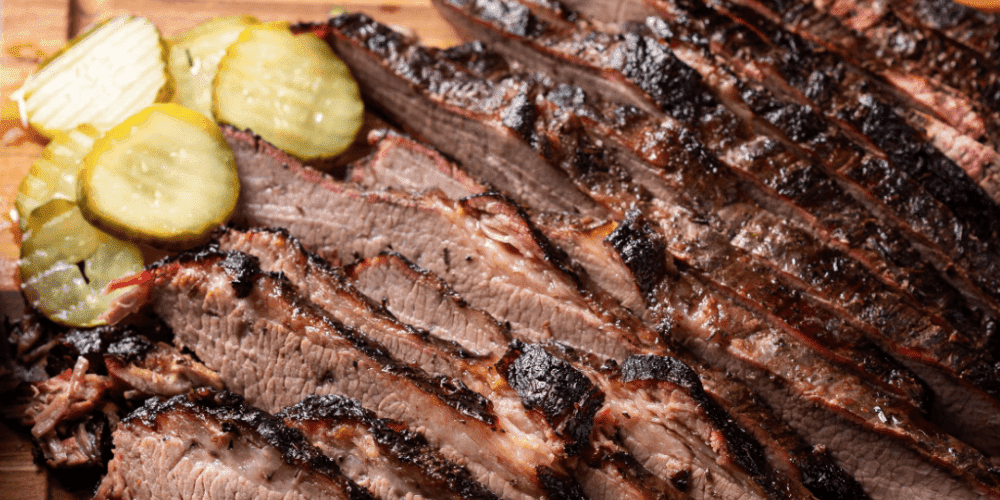
1. Brisket Preparation
Start with a 10- to 12-pound brisket that will fit on the grill perfectly. Trim off the extra top fat, but leave a 14″-thick layer of fat on the meat to keep it moist throughout the long cooking period. Apply a couple of teaspoons of rub to both sides of the brisket, distributing it evenly. If you like, you can cook it right away or let it rest in the fridge for several hours to enable the rub to permeate the flesh.
2. Getting ready to smoke in your grill
If you’re using a kettle grill, put it up using an indirect approach like the snake. Because brisket takes a long time to cook. To keep the temperature stable, place the meat in a drip pan with water immediately below it. Set it up for a lengthy smoke for smokers in the backyard. Soak a few handfuls of Wood Chips or big wood pieces in warm water for approximately 30 minutes before putting on top of the coals, using either technique.
3. Smoking the brisket
Using the vents to regulate heat, position the brisket fat on the topmost rack, cover with a deck, and heat to 225°F. If your grill lacks a temperature gauge, invest in a digital barbecue thermometer.
4. Low and slow
With the addition of briquets, you may keep the fire at a low and moderate pace. Maintain a constant temperature of 225°F on the grill by checking the temperature every hour. If you need to add additional charcoal or wet wood chips to keep the temperature and smoke consistent, resist the urge to open the lid.
5. Keep a close eye on the stall.
When the internal temperature of the brisket hits about 150°F, the meat’s internal temperature approaches a plateau due to surface evaporation. The stall is how pitmasters refer to it. Don’t get worked up! Wait for the stall to pass, or cover the brisket firmly in two sheets of thick aluminum foil with 1/2 cup apple juice added (called The Texas Crutch) and re-heat the grill to 225°F.
6. Final process
The optimum temperature for a well-smoked brisket is 195°F, but bear in mind that even after the brisket is taken from the grill, the interior temperature may rise by 10 degrees. Overcooking your brisket will result in dry, chewy meat, so avoid it at all costs. Another technique to check for doneness in brisket is to use the “feel” method: insert a tiny fork into the meat and twist it easily to see whether it’s done.
How long to smoke a brisket
When cooking at 250 degrees Fahrenheit, each pound of the smoked brisket should take around 90 minutes, including resting or holding temperature. Depending on the size of the cut, the overall cook time may range from 8 to 16 hours. Every brisket you cook will take a different amount of time.
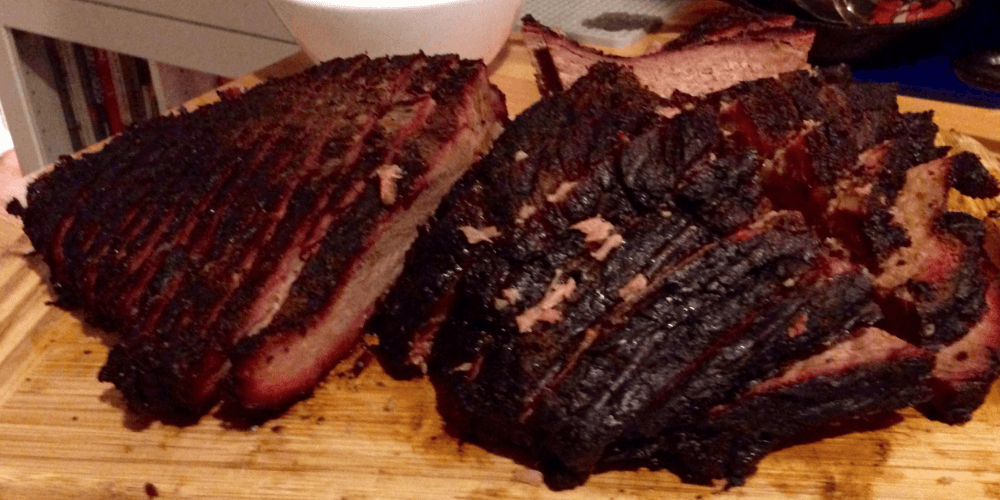
The best wood pellets for smoking
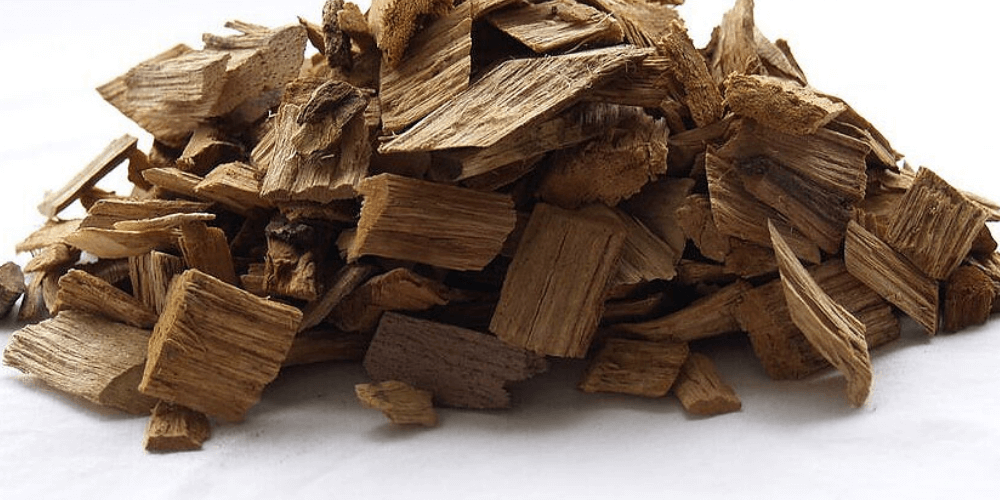
Hickory is well-known for its strong taste when it comes to smoke flavors. To balance the tastes, some people combine it with milder wood like oak, while others sweeten it with apple, cherry, or maple wood. For smoked brisket, any of these smoke flavors will do, and if you really want to be creative, try pecan wood. The nutty taste gives brisket a whole new dimension, and it goes particularly well with sweet and spicy ingredients.
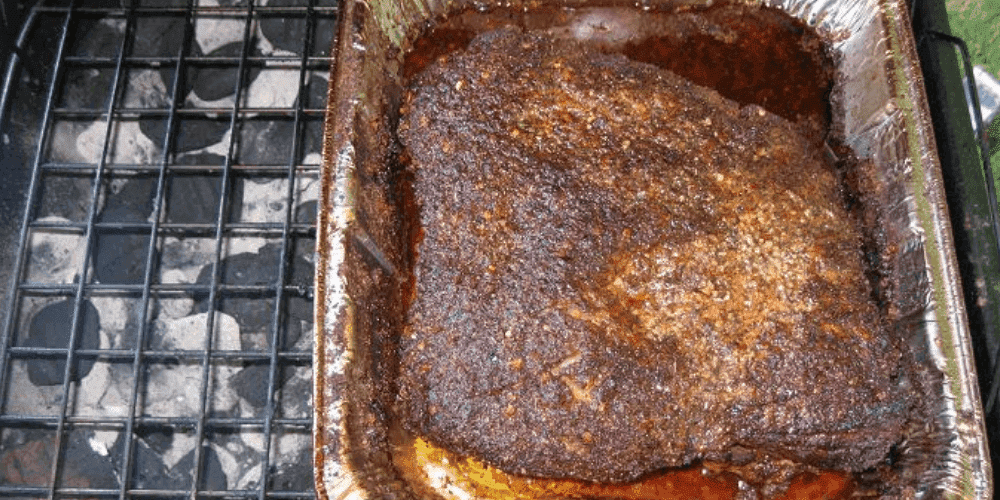
Wrapping a brisket
Wrapping brisket with foil or butcher paper is a popular way to speed up the cooking process.
Wrapping the brisket will avoid “the stall,” which occurs when evaporation from the brisket’s surface causes the cooking process to come to a stop. It also offers you greater control over the final look of the bark, and it may help keep moisture in the brisket that would otherwise be lost while it cooks.
When the internal temperature of the brisket hits 165-170 degrees, most pitmasters suggest wrapping it.
Cooking times will vary. Because briskets may weigh anywhere from 12 to 22 pounds, cooking durations vary from 8 to 16 hours depending on size, temperature, and brisket type. There are no two creatures alike.
Plan on between 30 and 60 minutes per pound as a general rule of thumb. A 16-pound brisket, for example, will take 10 to 12 hours to cook at 275 degrees Fahrenheit. The whole procedure will take between 18 and 20 hours, including trimming, injection, seasoning, and cooking.
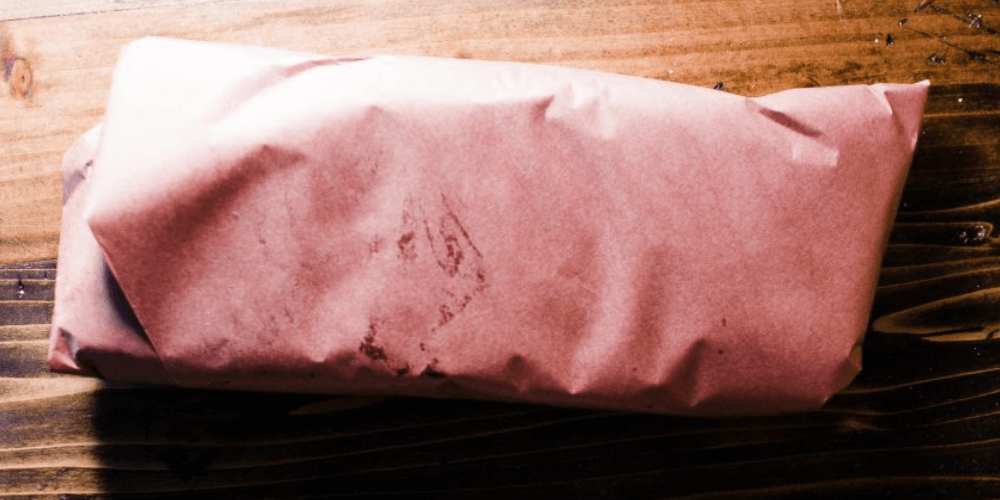
How to Serve It
The conventional method for slicing brisket is to separate the flat and point slices so that your guests may enjoy a mix of lean and fatty meat (barbecue sauce optional). You’ll be slicing meat against the grain in both instances, but you’ll go about it differently in each.
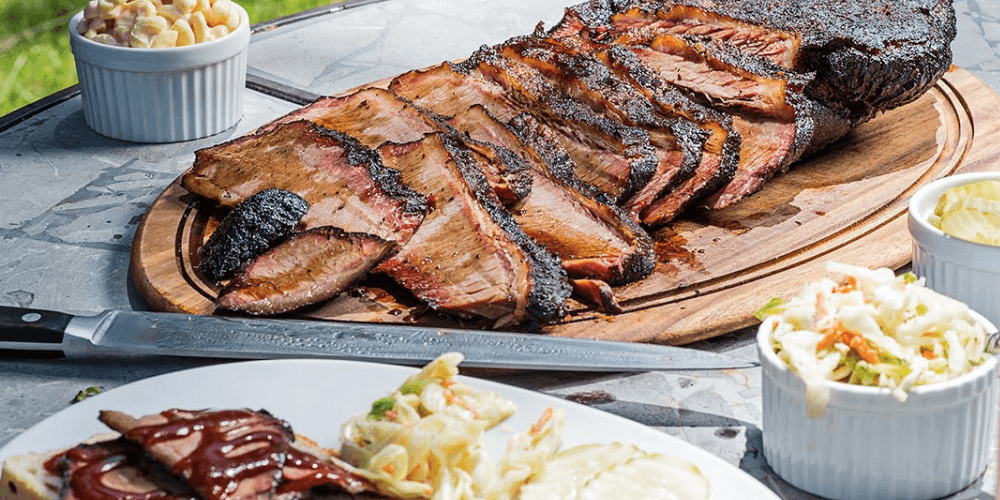


Every weekend i used to go to see this site, for the reason that i want enjoyment, since
this this web site conations in fact nice funny material too.
my website: nordvpn coupons inspiresensation
I loved as much as you’ll receive carried out right here.
The sketch is tasteful, your authored material stylish. nonetheless, you command
get bought an nervousness over that you
wish be delivering the following. unwell unquestionably come further formerly again as
exactly the same nearly a lot often inside case you shield this hike.
Feel free to surf to my web blog nordvpn coupons inspiresensation (http://shorter.me/nordvpn-coupons-inspiresensation–89115)
Touche. Solid arguments. Keep up the great effort.
Review my webpage :: nordvpn coupons inspiresensation
350fairfax nordvpn
Excellent post. I used to be checking continuously this weblog and I
am impressed! Very useful information specifically the last section 🙂 I deal
with such info much. I used to be seeking this particular information for a very lengthy
time. Thank you and good luck.
Feel free to surf to my webpage – nord vpn promo
It’s remarkable for me to have a site, which is useful
in favor of my know-how. thanks admin
Feel free to surf to my web page Eharmony special Coupon code 2025
Please let me know if you’re looking for a article writer for your
weblog. You have some really good articles and I feel I would be a good asset.
If you ever want to take some of the load off, I’d absolutely love to write some articles for your blog in exchange for a link back to mine.
Please blast me an email if interested. Thanks!
Review my web blog: vpn